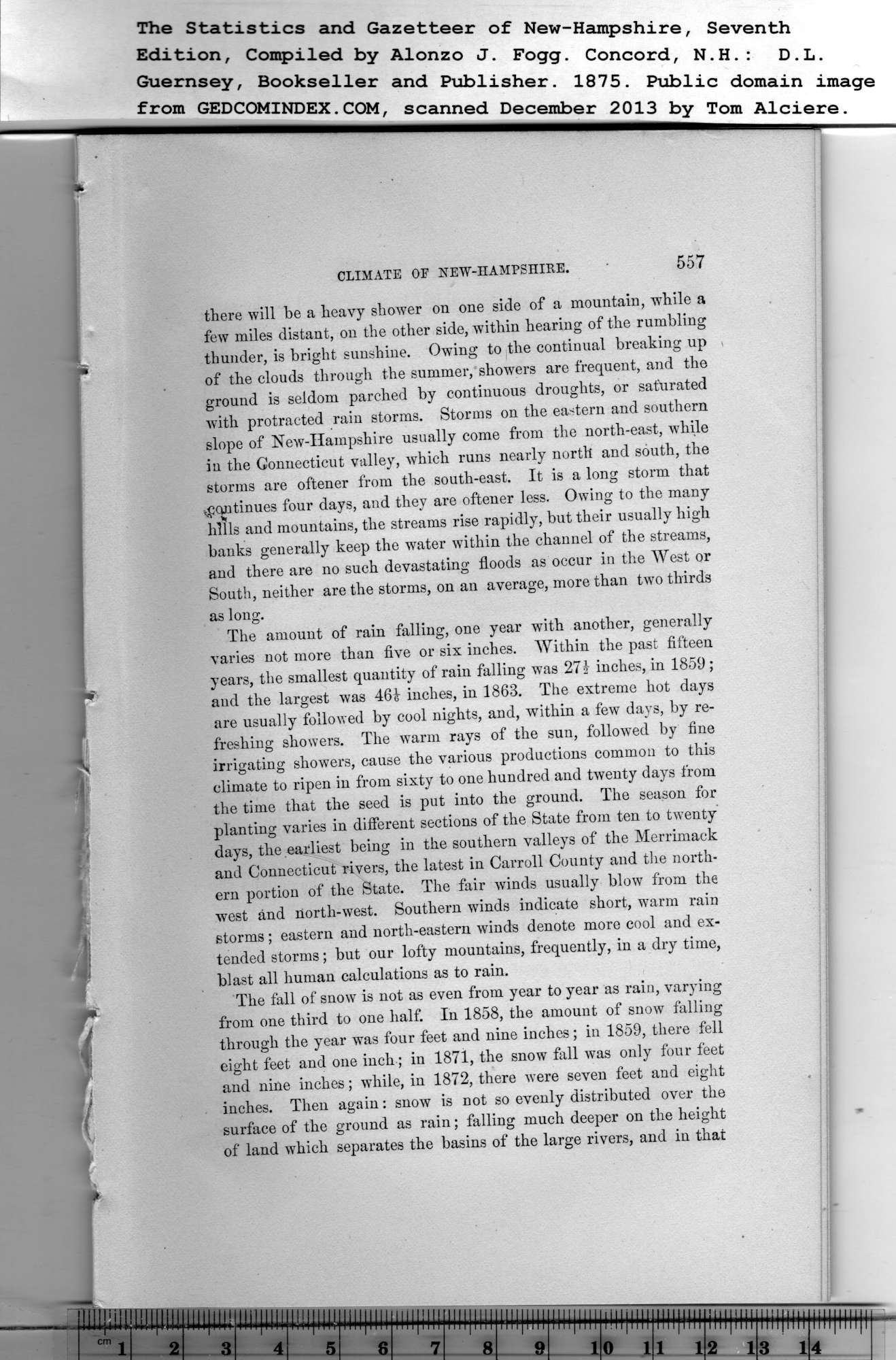|
Guernsey, Bookseller and Publisher. 1875. Public domain i
CLIMATE OF NEW-HAMPSHIRE.
there will he a heavy shower on one side of a mountain, while a
few miles distant, on the other side, within hearing of the rumbling
thunder, is bright sunshine. Owing to the continual breaking up *
of the clouds through the summer, showers are frequent, and the
ground is seldom parched by continuous droughts, or saturated
with protracted rain storms. Storms on the eastern and southern
slope of New-Hampshire usually come from the north-east, while
in the Connecticut valley, which runs nearly north and south, the
storms are oftener from the south-east. It is a long storm that
continues four days, and they are oftener less. Owing to the many
lillls and mountains, the streams rise rapidly, but their usually high
banks generally keep the water within the channel of the streams,
and there are no such devastating floods as occur in the West or
South, neither are the storms, on an average, more than two thirds
as long.
The amount of rain falling, one year with another, generally
varies not more than five or six inches. Within the past fifteen
years, the smallest quantity of rain falling was 27i inches, in 1859;
and the largest was 461 inches, in 1863. The extreme hot days
are usually followed by cool nights, and, within a few days, by re-
freshing showers. The warm rays of the sun, followed by fine
irrigating showers, cause the various productions common to this
climate to ripen in from sixty to one hundred and twenty days from
the time that the seed is put into the ground. The season for
planting varies in different sections of the State from ten to twenty
days, the earliest being in the southern valleys of the Merrimack
and Connecticut rivers, the latest in Carroll County and the north-
ern portion of the State. The fair winds usually blow from the
west and north-west. Southern winds indicate short, warm rain
storms; eastern and north-eastern winds denote more cool and ex-
tended storms; hut our lofty mountains, frequently, in a dry time,
blast all human calculations as to rain.
The fall of snow is not as even from year to year as rain, varying
from one third to one half. In 1858, the amount of snow falling
through the year was four feet and nine inches; in 1859, there fell
eight feet and one inch; in 1871, the snow fall was only four feet
and nine inches; while, in 1872, there were seven feet and eight
inches. Then again: snow is not so evenly distributed over the
surface of the ground as rain; falling much deeper on the height
of land which separates the basins of the large rivers, and in that
PREVIOUS PAGE ... NEXT PAGE
This page was written in HTML using a program written in Python 3.2
|
